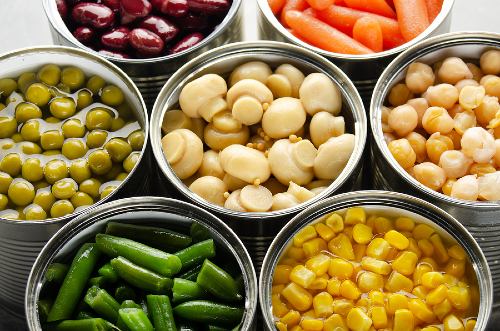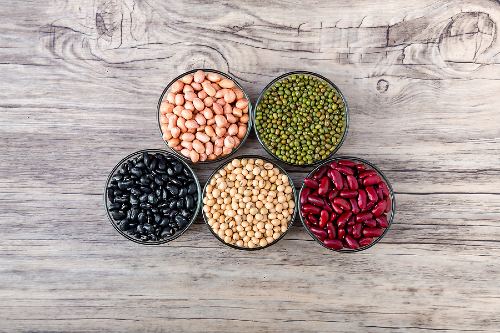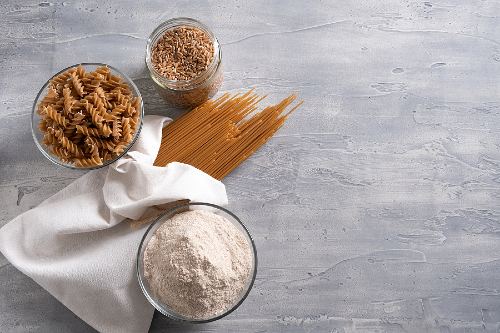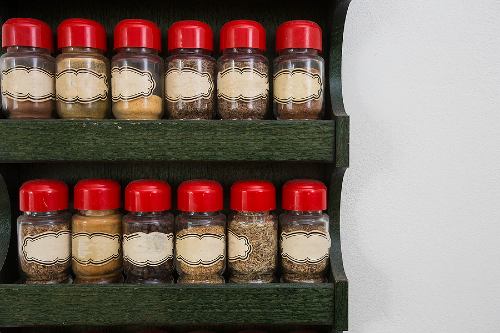A pantry that is stocked with nutritious, shelf-stable foods can go a long way on a busy weekday night. This blog is full of ideas to help you make sure that you always have options!
Canned and dry goods are known for their ability to be stored on a shelf for a long period of time without spoiling. These ingredients are also known for being convenient and affordable. Having a few of these items on hand can save you time and money when you are in a pinch.
Note: The following lists are meant to serve as a guide as you stock your pantry. We encourage you to customize your pantry based on your personal and cultural preferences!
Fruits and Vegetables
Remember all forms of food count! In terms of shelf stability– canned and dried items last longer than fresh produce while keeping their nutritional value.
When purchasing canned fruits and vegetables, make sure to look for “low-sodium” and “no sugar added” options. Sodium and added sugars are both nutrients that should be limited in the foods you eat each day. [1]
Fruits and veggies can be added to almost any meal. Throw a few cans of vegetables into your pasta sauce, add a side of canned peaches to your next meal, or pack a bag of dried apples for your snack break at work.
Here are a few items to keep on your shelf:
- Canned or dried fruits
- Peaches
- Pears
- Mangos
- Pineapple
- Mandarin oranges (A great for topping salads!)
- Canned or dried vegetables
- Beans and peas (see varieties below)
- Corn
- Carrots
- Mushrooms
- Turnip greens
- Tomatoes

Protein
Pantry staples that provide protein come in many different forms. One of the most common shelf-stable protein foods is beans! You can learn more about their health benefits and how they can be prepared by clicking here.
Here are some additional protein foods to keep around:
- Canned beans and peas (chickpeas, black beans, pinto beans, snow peas, etc.)
- Canned meats (tuna, salmon, chicken, etc.)
- Dried beans and peas
- Lentils
- Nuts and various nut butters

Grains
The Dietary Guidelines for Americans suggest that half of the grains that you consume each day should be whole grains. Whole grains are an important source of fiber, vitamins, and minerals. They have also been shown to reduce the risk of heart disease. [2]
On nights where you are shopping in your pantry for ingredients to throw together, whole grains may be the furthest thing from your mind. However, if you planned ahead, you’ll find these ingredients waiting for you on the shelf.
Here are some whole grain products to pick up on your next grocery run:
- Brown rice
- Whole grain pasta
- Whole wheat breads and crackers
- Quinoa
- Oats
- Farro
- Popcorn (Yes! We’re excited about this one, too.)

Herbs and Spices
Dried herbs and spices typically keep well on a shelf and can take many dishes from bland to bright! Here are some of our favorite items to keep on hand:
- Garlic Powder
- Onion Powder
- Dried Oregano
- Dried Thyme
- Chili Powder
- Cumin
- Cinnamon
- Paprika
If you are interested in learning more about herbs, their uses, and some dishes to try them in, check out our A Guide to Herbs blog.

A great place to start when stocking your pantry is making a list of what you already have. Once you have this information, we encourage you to use these lists and consider your personal and cultural preferences to ensure that you have nutritious, shelf-stable ingredients to pull from when needed!
Written by Darci Bell, RDN, LD | Edited by Leslie Davis, RDN, LD, CDCES , and the Nutrition Education Team
References: